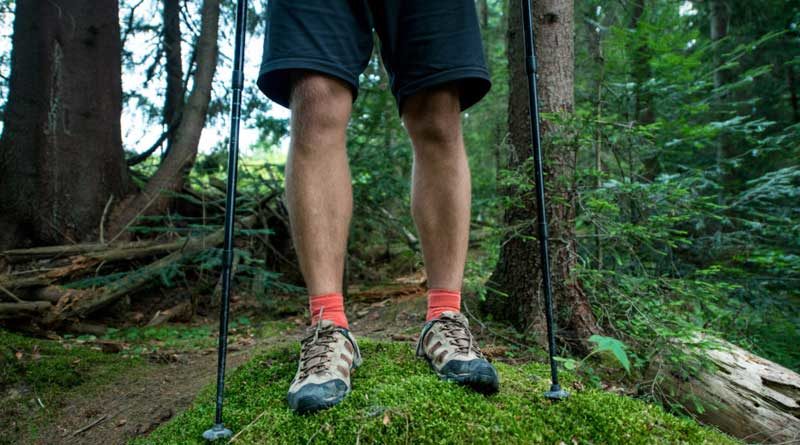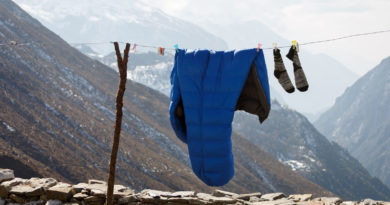How Should Walking Shoes Fit?
Having properly fitted walking shoes is important for enjoying your time outside. If you don’t get it right, you can encounter some blisters and pain through every step of the way. In this article, I am going to talk about how to properly fit your walking shoes. One of the most important things is that your shoes should have room for your foot to swell into it. Similarly, though, don’t go for a shoe that is too big or don’t go up a size. Shoes vary between styles, fits, and cuts. So, size doesn’t always determine what you actually need.
So follow these guidelines and make sure you get a great fit.
The Overall Fit
Put your shoes on with the socks you are going to wear when you walk. For example, if you normally wear a liner sock, try your shoes on with a liner sock and the over socks. Now lace your shoes as snug as possible without being too tight or uncomfortable. Feel the overall comfort. Does your shoe feel uncomfortable on your foot? Is it too tight or too loose? Do you feel any uncomfortable seems? With the shoe on and laced up, you should be able to slide two fingers into the back, pretty snug and there shouldn’t be any extra movement. Also, you should not get any heel lift (a quarter of an inch may be fine) and your toes should not touch the front of the shoe.
Use Insoles
Take the insole out from inside of the shoe and place it on the floor. Put your heel on the back of the insole and then stand up. Make sure there’s about a finger width distance apart between the front of your toe and the end of the insole. It allows you a little bit of space in case your foot swells throughout the day or in case there’s a little bit of movement within the shoe. When you’re walking downhill, your toes don’t hit the front of the shoe.
Wear the Right Walking Socks
Having good walking socks will be important for getting any kind of sweat and moisture away from your foot. It allows your foot to move through the technology in the shoe. If you don’t, you run a higher risk of getting blisters. So start out with great walking socks.
Test your Shoes
Put the shoes on and put your heel on the ground and make sure your foot is pushed to the back of the shoe. Once you have done that, make sure the tongue is straight and centered on your foot. Laces up your shoes snuggly but not too tight otherwise it’s going to be quite uncomfortable. Now walk up a small slope. Take small kind of exaggerated steps and see what happens. This test is to see if the heel is secure in the shoe. If the heel isn’t secure, that can cause blisters which can obviously be an issue. It checks if the heel is moving enough or is secure. If it is, great, if it’s not, check your lacing and make sure that the lacing is tight throughout. If you’re still getting some movement, you might want to reconsider a different pair of shoes.
The next step is walking downhill. Again, take some exaggerated steps or sort of stamping. It will check to make sure that the front of your toes isn’t touching the front of the shoe. If they are touching the front of the shoe, it will cause blisters and potentially some bruised toes. So that’s what you are looking out for there. Your toes aren’t touching the front, it is great. If they are, again, recheck your lacing. If laces are OK and your toes are still touching, your shoes might be a little bit small or you might need to go a size up.
Conclusion
No shoe is ideal if it doesn’t fit well. Your shoes need to hold your feet securely in place and not let your heel raise u as you step. At the same time, your toes must have enough room so they don’t hit the front as you go downhill. Going downhill with a pack on will push your toes forward and you don’t want them to hit the front of the shoe. So wiggle room for your toes is a must. A good fit will help avoid blisters and keep your feet on the trail.




